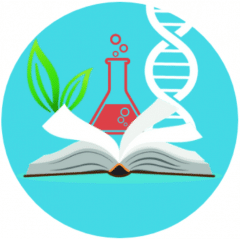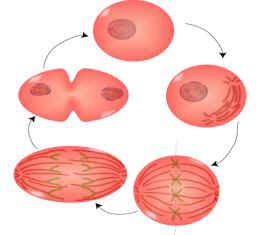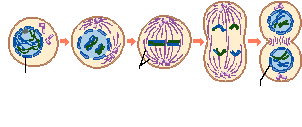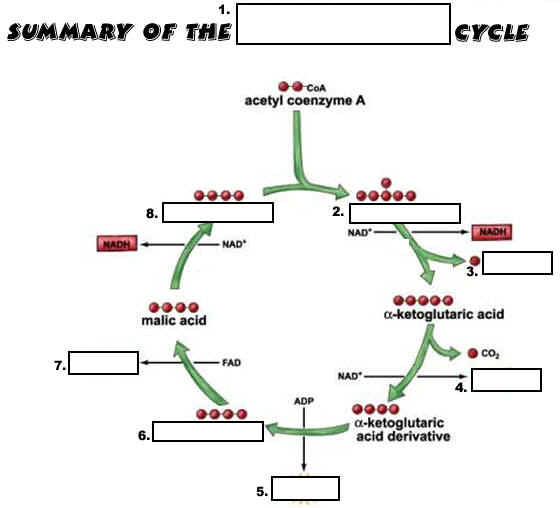 |
Cells |
Section 4-1 Introduction to the Cell
1. What is a cell?
2. Who was the first person to use a simple microscope and view microscopic organisms?
3.. What English scientist was first to view dead plant cells?
4. State the 3 parts to the cell theory.
5. Tell how each of these scientists contributed to the cell theory — Matthias Schleiden, Theodor Schwann, and Rudolf Virchow.
6. Give 3 ways that cells are not alike.
7. What is one of the longest animal cells?
8. Explain why cells are limited in how large they can grow.
9. The shape of a cell reflects its ______________________. Give an example of this.
10. Define organelle & tell what they do for a cell.
11. What surrounds the outside of all cells?
12. Where is the nucleus of a cell & what does it do?
13. What two characteristics do all eukaryotes share?
14. What type of cell is a bacterium?
15. Where is the genetic information (chromosome) of a bacterium found?
16. What are prokaryotes & are they in the same kingdom as eukaryotes?
Section 4-2 Parts of the Eukaryotic Cell
17. Why can cells not survive if they are totally isolated from their environment?
18. What controls what enters or leaves a cell?
19. Define selectively permeable.
20. Describe the phospholipid make up of cell membranes.
21. Cells are bathed in an aqueous environment. What does this mean?
22. Sketch the lipid bilayer of a cell showing the inside & outside of the cell. Be sure to label all parts of the membrane.
23. What is the difference between peripheral & integral proteins in the cell membrane?
24. What is the purpose of the carbohydrate tails attached to some integral proteins?
25. Do all integral proteins look alike? Explain.
26. Explain the fluid mosaic model of the cell membrane.
27. Name 12 organelles found in cells. (See table 4-2)
28. In what part of a cell are organelles found?
29. What is cytosol & what does it contain?
30. Name 3 organelles found in plant, but not animal cells. (See bottom of table 4-2)
31. What is the function of mitochondria? What energy molecule is made there?
32. Why do liver & muscle cells have more mitochondria than other types of cells?
33. Describe the outer covering of the mitochondria.
34. What are cristae & what is their purpose?
35. Mitochondria are able to reproduce inside cells because they have their own ___________.
36. What organelles are the most numerous inside cells?
37. What two things make up ribosomes & are ribosomes surrounded by membrane like other organelles?
38. Ribosomes are made inside the _______________ of a cell.
39. Ribosomes may remain unattached or __________ in cytosol or attach to what other organelle’s surface?
40. What organic compounds to ribosomes synthesize or make?
41. What does ER stand for & what is the ER in a cell?
42. What is the ER’s function?
43. Name the two types of ER inside cells.
44. What is on the surface of rough ER?
45. Rough ER synthesizes large amounts of _________________ for cells.
46. Give 3 functions of smooth ER.
47. What is the Golgi apparatus?
48. Golgi is a system of ________________ or flattened _____________.
49. How does the Golgi work with the endoplasmic reticulum of a cell?
50. What are lysosomes & what do they do?
51. Name 8 things that the enzymes inside lysosomes digest?
52. In what type of cells are lysosomes common? In what type of cell are they rare?
53. Where is the cytoskeleton & what is its function?
54. What are the two major components of the cytoskeleton?
55. How do microfilaments & microtubules differ from each other?
56. What are spindle fibers & what are they made of?
57. What protein makes up microfilaments?
58. Compare cilia & flagella.
59. What is the purpose of the nuclear matrix?
60. What double membrane surrounds the nucleus?
61. Where is chromatin found & what 2 things is it made of?
62. When a cell is ready to divide, chromatin condenses & coils into _____________________.
63. What is the purpose of DNA inside the nucleus?
64. How do nuclear pores help RNA?
65. Where is the nucleolus found and what is made there?
66. Where is the cell wall in plants found, what is its function, and what is it made of?
67. What are the 2 types of cell walls in plants?
68. What is the difference between the primary & secondary cell walls?
69. What is found inside plant vacuoles?
70. What takes up much of the volume of plant cells? What happens to the other organelles?
71. How are plastids similar to mitochondria?
72. What is found inside of plastids?
73. Name the most familiar plastid & tell its function.
74. What are thylakoids?
Section 4-3 Multicellular Organization
75. Cells are organized into ______________________. Give an example.
76. What is an organ & give an example?
77. What forms organ systems?
78. The digestive system is an organ system. Name the organs that make up this system.
79. All the systems working together make up an ______________________ such as a plant or animal.














